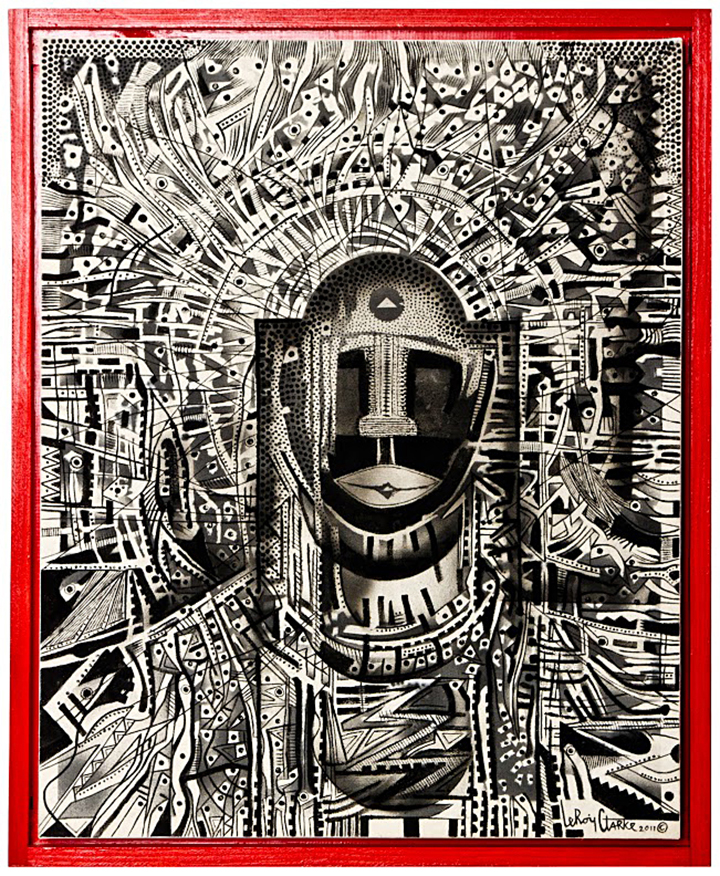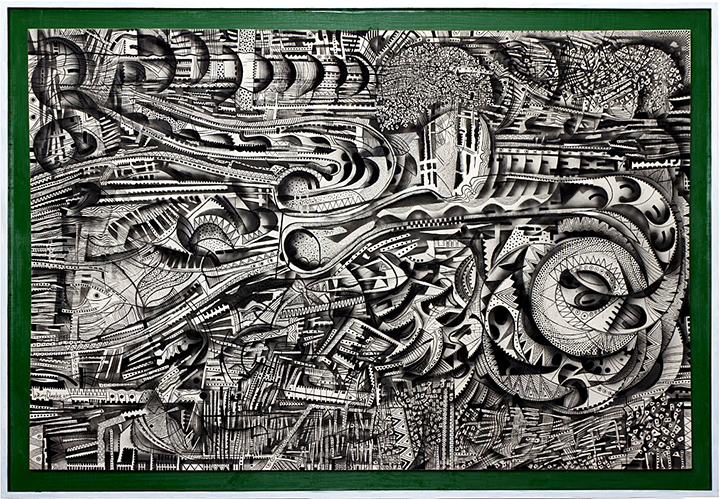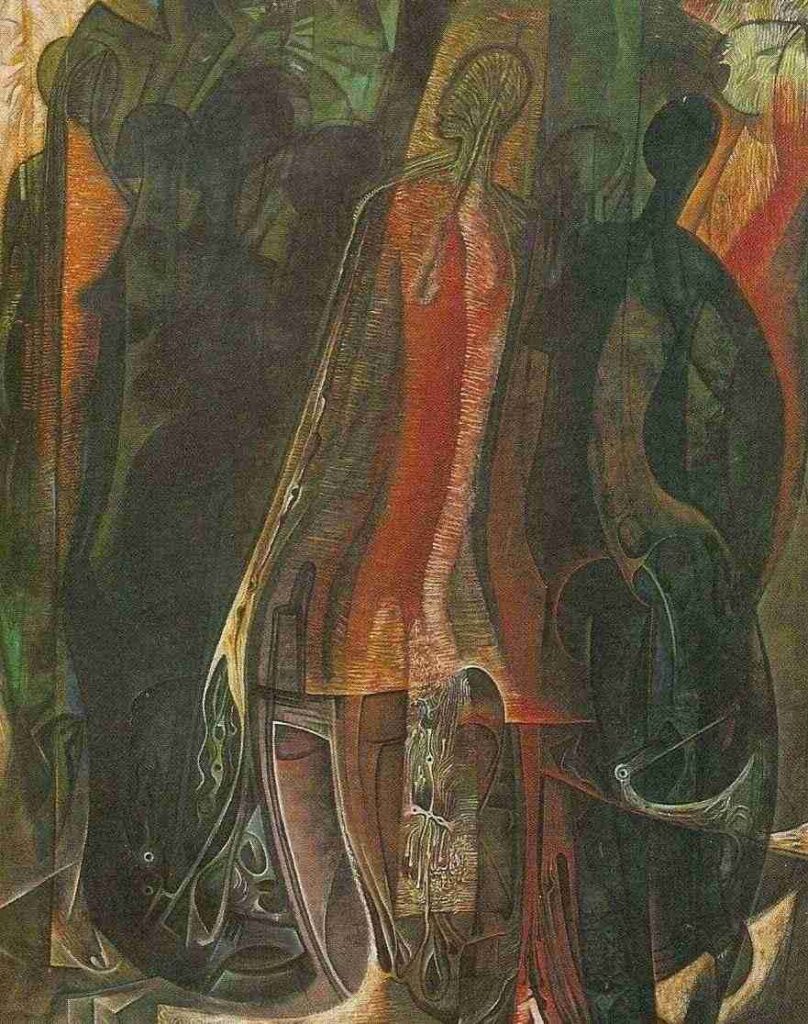
LeRoy Clarke
De Meeting, 1981
About:
Dr. LeRoy Clarke is a force to be reckoned with. If his extensive repertoire of artwork, poetry and essays spanning half a century doesn’t awe you, go to Trinidad and meet the man. We dare you. His imposing figure belies a quick smile and a mischievous wit that will have you laughing one minute, and wondering how you got caught up in serious conversations on philosophy and art the next. He is, most who know him would agree, Trinidad’s most internationally prolific and nationally controversial living artist.
Hailing from “Behind The Bridge” in Gonzales, Belmont, Dr. Clarke is a self-taught artist, writer, philosopher and one of only two persons bestowed with the title of Master Artist by the National Museum and Art Gallery of Trinidad and Tobago. He was also awarded the Yoruba title “Chief Ifa’ Oje’ Won Yomi Abiodun” by the Orisha shrine Ile Eko Sango/Osun MiI’Osa, which when translated means, “He Who Cannot Be Rebuked.”

This is a man of stories. From his days scraping red brick and clays in water to make the paints that he was too poor at the time to afford, LeRoy Clarke has always believed he was destined for greatness. He offers a particularly remarkable origination story regarding his birth: becoming pregnant before marriage, his mother was contemplating suicide by throwing herself off of the Port of Spain jetty when she was accosted by the Yoruba spirit of the ocean, Yemanja, with the words, “Suppose you don’t dead, you will shame your family.”

As a young man in the late 1950s, Clarke was the vocalist for the band, The Beamers, and a primary school teacher, but very soon his true calling took him on a journey that led to his eventual status as Master Artist. His first solo art show, “Labour of Love,” was shown at the Bank of Nova Scotia in Port of Spain in 1966, and soon after he was exhibiting in Brazil, Canada and the US, where he eventually relocated, following the woman who would become his first wife. It was during this time he wrote his suite of still unpublished poems, “Fragments of A Spiritual” and created a corresponding collection of work, which was first shown at the Studio Museum of Harlem. “Fragments” quickly became a catalyst, as he became the Studio Museum of Harlem’s first Artist in Residence, from 1972-1975. He was also part of the “100 Years of American Art” exhibition in Philadelphia, 1970.

De Woman, 1976.
Dr. Clarke returned to Trinidad in 1980 with a vision of uplifting his people through his work, output that has continued to speak to issues of national importance, Afrocentricity, and discovery of self. Whether it’s for the emotional and psychological shock of his paintings and drawings or simply to hear what will come out of his mouth, he has continued to be sought out by young and old, who travel from various parts of the world to experience him.
Our own photographer extraordinaire Colin Williams caught up with the Master Artist in February, at the National Museum in Port of Spain, where his latest work, “Eye.. Hayti…Cries… Everywhere,” comprised of 110 acrylic drawings, was being shown.
Colin next spent time with the artist at his residence, known as “De Legacy House of El Tucuche,” in Cascade, Trinidad—so called because, to Clarke, El Tucuche, the second highest mountain on the island, is the highest point of man and his achievements, second only to Aripo, the highest mountain in Trinidad—and, for him, where God resides.
“What was most interesting about his work was also him,” Colin says of his time spent with Clarke, who does not often grant interviews or sit for photographs. “In Trinidad a few years ago, I was about to leave a small live house where a friend had just got off stage, when I noticed a striking older man in African attire. It took me a few minutes to really take him in because he had a lot going on. Like no other older man I saw in Trinidad in my recent visits. He had a walk of an Old Lion, but the younger ones respected who he was.”

Rape, 1982 (detail)
A few years later, they connected on Facebook. “I saw LeRoy Clarke in a picture with a friend of mine. I was taken aback that he had a Facebook page. So I added him, he replied and from that day it was all about trying to know about his work in Trinidad and Tobago. I hope my images will compel or provoke interest in LeRoy Clarke’s work and story.”(Words by Tishanna Williams)
